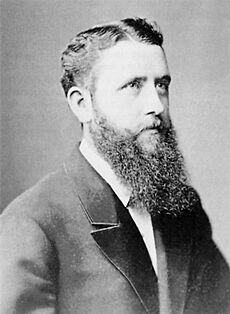Otto Schoetensack facts for kids
Otto Karl Friedrich Schoetensack was a German scientist. He was born in 1850 and passed away in 1912. He started his career in business. Later, he became a professor who studied humans and their history. He is best known for his work in finding and describing an ancient human fossil.
Contents
Who Was Otto Schoetensack?
Otto Schoetensack was born in Stendal, Germany, on July 12, 1850. He first worked as an industrialist. This means he was involved in running large businesses. He even started his own chemical company. After some time, he decided to change his career path. He retired from his business work. Then, he became a professor. His field of study was anthropology. Anthropology is the study of humankind. It looks at human societies, cultures, and how humans have developed over time.
A Big Discovery in 1908
Professor Schoetensack became famous for an important discovery. This happened during an archaeological dig in 1908. An archaeological dig is when scientists carefully dig into the ground. They look for old objects or remains. These finds help us learn about people who lived long ago.
During this dig, a worker named Daniel Hartmann found something amazing. He discovered a lower jawbone. This jawbone belonged to a very old human ancestor. At that time, it was the oldest human fossil ever found.
What Was Found?
The jawbone was found near Heidelberg, Germany. This area is famous for its ancient history. Professor Schoetensack carefully studied this fossil. He realized it was from a type of human that was new to science. He gave it a special name: Homo heidelbergensis.
Homo heidelbergensis means "Heidelberg Man." This discovery was very important. It helped scientists understand more about human evolution. It showed that different kinds of humans lived long ago. This fossil provided a missing piece in the story of how modern humans developed.
The Importance of Homo heidelbergensis
Homo heidelbergensis is considered an important early human species. It lived in Europe and Africa about 600,000 to 200,000 years ago. These early humans were strong and had large brains. They were skilled hunters and made tools.
The discovery of this jawbone by Otto Schoetensack helped us learn about our ancient relatives. It showed that humans have a very long and complex history. His work helped pave the way for future studies in paleoanthropology. Paleoanthropology is the study of ancient humans through fossils.


